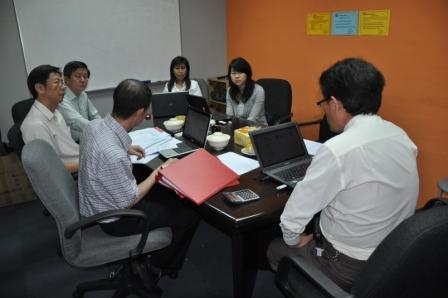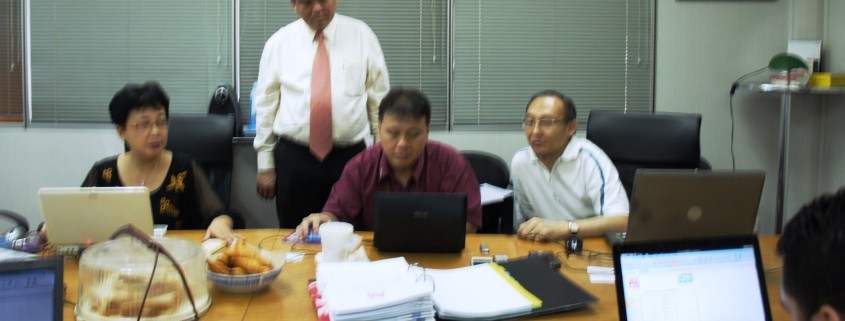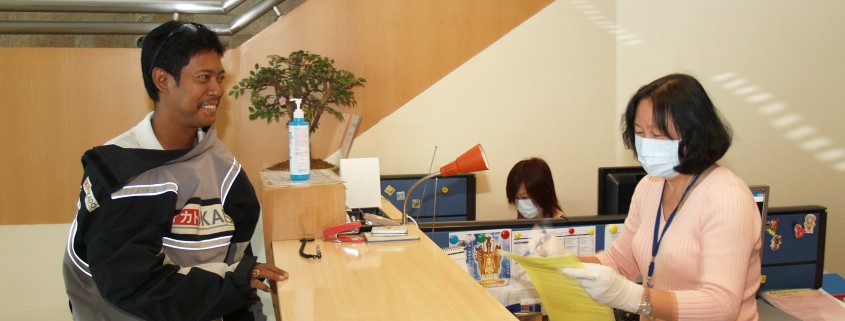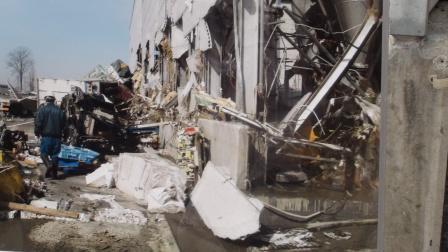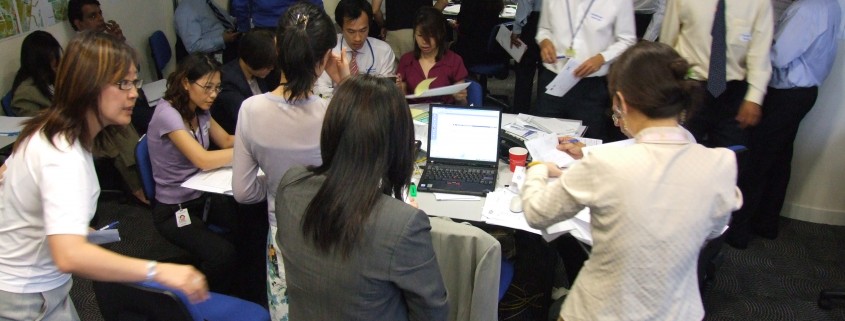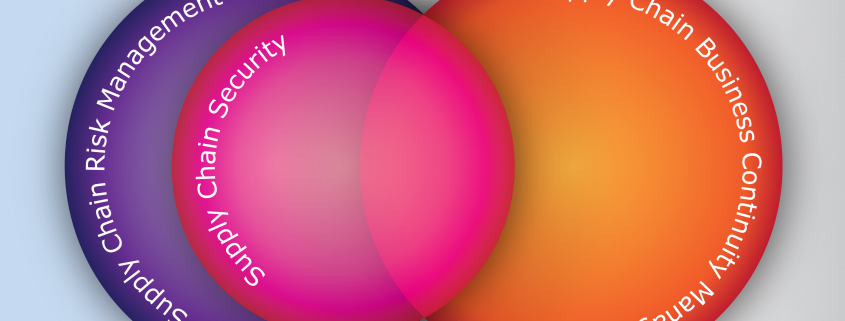9G Elevator Continuity Case Study (Elevator & Escalator Industry)
9G Elevator & Escalator Business Continuity Management Case Study
9G Elevator Pte Ltd is a thriving elevator and escalator maintenance company that provides elevator and escalator services to building owners and managing agents. 9G operates in Singapore, providing their services to a wide-range of client’s, from town councils – Aljunied and Ang Mo Kio – to hotels such as Pan Pacific Hotel Singapore. With expanding local operations, a resilient operational plan is essential to manage the business in the event of a disaster.
The Challenge
9G is mainly involved in the commissioning and installation of elevators and escalators, as well as follow up services such as elevator and escalator maintenance and repairs. One example is the provision of 24-hour call-back service and emergency breakdown repair, which means that 9G will have to be on constant standby to deal with any problems. Due to the fact that there is zero allowable downtime for these services, as contractually agreed, 9G realized that a Business
Business Continuity Plan will have to be developed to prepare for potential disasters such as fire, telecommunication failure and the absence of key staff.
“We were concerned that 9G might not be able to fulfil the contractually required terms and conditions should we be hit by a crisis or disaster. Our reputation is of utmost importance.
Therefore, we feel very strongly towards a Business Continuity Plan that is functional and resilient, so as to protect our business. ” says Loo Tien Hoe, Managing Director of 9G Elevator.
One of the key competitive issues, such as brand assurance (and perception) of local enterprises, as compared to foreign MNCs, also drove 9G to venture into Business Continuity. The Elevators and Escalators industry is still largely dominated by foreign brands such as Mitsubishi, Escamo and Hitachi. Therefore, to give themselves an edge over these foreign MNCs, 9G decided that it needs to assure clients that they can continue to rely and depend on 9G in times of crises or disasters. It is with all these in mind that 9G embarked on the project, with the objective of developing a comprehensive plan with minimal disruption to current business operations. They required a robust plan to satisfy management and clients’ concerns.
The Solution
Even though the company has about 70 personnel, most of them are maintenance staff who operate on-site. This leaves about 20 administrative staff in the office, who provide back-end direction and support. With such a lean organization structure, 9G did not consider recruiting in-house expertise to drive the BCM Program, but instead appointed a project team to explore and pursue alternative solutions. The appointed 9G project team immediately started to source for a consulting firm to develop the company’s Business Continuity skills and create an effective Business Continuity Plan.
“After some deliberation between the different approaches to BCM consulting, we decided to advance with GMH’s consulting services because it proposed a more holistic BCM implementation this involves developing BCM competency in the organisation, which goes hand in hand with the consultancy service. This arrangement is perfect for a company like ours with no prior BCM experience,” recalls Tien Hoe.
GMH, in conjunction with BCM Institute, developed a specialized training program to inculcate and develop BCM Competency in the organisation. GMH consultants aided in the development of an integrated BCM framework by setting up 9G’s BCM objectives and policies, together with the management and project team. This set the stance of the management and provided clear directions for all staff in the organisation. Consultants also led the BCM team and management through the various phases in the BCM Planning Methodology.
For example, in the Risk Analysis and Review (RAR) phase, a list of potential threats was identified and each of these threats was rated according to their likelihood and impact on 9G’s people, processes and infrastructure.
In the Business Impact Analysis (BIA) phase, the Minimum Business Continuity Objectives for each business unit in 9G was documented. The team managed to identify the financial and non-financial impact of not performing a particular business function, as well as the Recovery Time Objectives (RTO) and Recovery Point Objectives (RPO) for each business function. As previously noted, all Maintenance business functions were identified as highly critical to the 9G, evident with their 4-hour RTO. This is followed closely by Admin/Accounts and IT’s business functions, some of which have RTOs of only 1-day.Therefore 9G had to come up with strategies to recover critical maintenance functions like call-back and hotline services so as be able to continue to respond to clients.
9G came up with three main recovery options after a cost benefit analysis – Provision of a remote site, establishment of a private alternate site and continuation of operations from clients’ site. 9G’s favoured operating from a private alternate site during a disaster as there is readily available infrastructure and utilities. Hence, this reduces the set-up time and any extra maintenance costs.
Due to the nature of the business, Logistics, Maintenance and Installation will have to continue its operations at the clients’ site, since these personnel are the ones performing the immediate/emergency repair, maintenance and installation jobs. Logistics will have to support Maintenance services with spare parts during a crisis. It was also decided during the Recovery
Strategy workshop that 9G’s IT data be backed up daily. All systems and data will have to be backed up weekly for the entire organisation and kept at the alternate site. As part of pre-crisis preparation, cross training will also be conducted for key personnel.
Armed with these strategies in mind, 9G, together with GMH consultants, then proceeded to write the Business Continuity Plan with more detailed recovery procedures for each business unit, including the roles and responsibilities of those in the BCM Team. Assembly points, alternate and remote site layouts and 9G’s organization and individual business unit call trees were inserted into the plan. The plan was consolidated by the consultants and the result was a comprehensive plan which can be easily understood by all. A call tree test and walkthrough exercise was conducted so that the staff are aware of the organization’s BCM efforts. “This BCM initiation really brought out the other side of 9G – one which is forward thinking and always planning for a disaster. A culture of non-complacency and service continuity in the face of disasters has also been embedded in the organisation,” remarked a very pleased Tien Hoe.
The Result
9G developed operational and IT recovery procedures to overcome a seven day disaster (planning assumption). The project ensured that the company identified and prepared an alternate location as the headquarters for its management and operations. The Business Continuity Management System developed under GMH’s guidance allowed 9G to be certified SS540 compliant from Certification International. 9G is now the first company in its industry to attain BCM certification. This means that it will have the ability to create added value while tendering for key projects, especially those from government agencies, such as Housing Development Board (HDB). 9G is also able to ensure its corporate governance as an organisation and as a Service Level Agreement (SLA) provider by being prepared and certified in terms of service continuity. Loo Tien Hoe best sums up the project, “management and our clients now feel comfortable knowing that 9G’s operations are secure, which definitely gives us an edge over the other elevator and escalator companies.”
At A Glance
What they wanted to do:
- Develop a robust business continuity plan
- Create internal Business Continuity expertise
What they did:
- Provided managers and staff the necessary knowledge to develop a business continuity plan
- Jointly created a plan with GMH consultants
What they accomplished:
- Achieved SS540 certification from Certification International
- Developed a disaster headquarters
- Implemented resilient IT and operational procedures
- Satisfied management and clients’ concerns
- First company in its industry to attain BCM certification
Statement:
“GMH provided us the necessary guidance to develop our Business Continuity plan and internal training program. We now feel confident to manage our own Business Continuity program.”
9G Elevator Pte Ltd
Managing Director
About GMH:
GMH offers a total business continuity solution for organizations of any size. GMH, in conjunction with its clients, develops comprehensive business continuity plans. Its partnership with BCM Institute ensures that clients will gain domain Business Continuity knowledge and the ability to develop future Business Continuity plans.
DTS Marketing Case Study (Specialized Industry)
DTS Marketing Business Continuity Management Case Study
DTS Marketing Pte Ltd is a leading company that provides Information Technology solutions and services to the banking financial sector and the hospitality and retail sector. Headquartered in Singapore, DTS operates worldwide with subsidiaries and satellite offices in Malaysia, Cambodia and China. With expanding global operations, a resilient operational plan is essential to manage its international businesses in the event of a disaster, especially to the banking financial sector.
The Challenge
DTS provides IT support and services to banks for machines such as the TK Personalisation MICR Encoder, Teller Scan Cheque Scanner and Talaris System, which involves the scanning and encoding of cheques. The company also provides Point of Sales System, Tracker Tenant Management Solution and Voucher Management System to the hospitality and retail industry. DTS core business is not only to market the products listed above, but to also provide after sales services that will help business owners manage their businesses from the front of the house operation to the back of the house operation.
For this reason, they are frequently governed by Service Level Agreements (SLAs). It was then that they realized a Business Continuity Plan would have to be developed in order to maintain their support operations to these clients in times of crises and disasters. “The Management concern was that DTS would not be able to meet the stringent SLAs, especially for the banking financial sector, in the face of crises. This would cause DTS to incur huge financial and reputational losses,” says Janet Ong, Managing Director of DTS Marketing.
DTS embarked on the project with the objective to quickly develop a comprehensive plan with minimal disruption to current business operations. It required a robust plan to satisfy management and clients’ concerns.
Solution
DTS does not have any prior Business Continuity Plans or any kind of Business Continuity Management program. Due to its lean organization structure and lack of BC-skilled personnel, DTS’ Management looked to a consulting firm to develop the company’s Business Continuity skills and to help create a plan. “After some deliberation between different companies, we decided to move ahead with GMH’s consulting services because its two-pronged approach – consulting and training –provided the assurance that we would not only have a plan but also the expertise to maintain an organization BCM program,” recalls Janet.
GMH, in conjunction with BCM Institute, developed a specialized training program to increase the project team’s level of Business Continuity competency. It deployed consultants to oversee the project, aiding the DTS team in the analysis of the impact of potential threats to their business operations. Minimum Business Continuity Objectives were written for business units which were identified as critical during a disaster. Support and IT business functions were identified as the most critical ones with only a 4-hour Recovery Time Objective (RTO), as IT is almost always required to back-up Support’s operations.
Recovery strategies were weighed accordingly and it was concluded that DTS operate from a private alternate site during crises and disasters because of minimal setup cost and time required and convenient access to and activation of controls. It will be considered a “warm” recovery site with readily available infrastructure and utilities. Business units operating from the recovery site and remote sites were also considered. For example, to counter the stringent SLAs, it was decided that Support would operate directly from the client’s site for the first 2 days, keep their work logs manually until the recovery site is set up, monitor the situation and provide periodical updates to the command centre. IT, on the other hand will immediately proceed to set up the IT infrastructure at the recovery site, retrieve the backup files and provide support to the rest of the business units.
Business Continuity Plans were then created for each business unit, with detailed recovery procedures documented by the business unit representatives, under the supervision and guidance of the consultants. Other considerations like assembly points, call tree, key contacts and detailed directions to the alternate site were also determined by the DTS BCM Team. The team also performed a walkthrough exercise to familiarise themselves with the recovery procedures, as well as a company-wide notification call tree test to ensure its effectiveness. The result was a 100% success rate of attempted contacts within 1 hour, with 95% of relayed messages returning accurate.
One of the key success factors of the whole consulting project was the fact that the management and business unit heads were present for all workshops, allowing the entire project team to be able to effectively iron out any discrepancies on the spot. The training was highly beneficial to DTS, resulting in the creation of a Business Continuity culture among employees and management. “Due to the rigorous process of implementing BCM in our organization, the BCM Team and Management had to meet frequently to iron out any problems and to discuss about the BC Plans. This really brought the (DTS) team together. We became more unified and BCM became a concept embedded in the employees, evident in the incorporation of backup procedures in their daily routines,” remarked Janet.
The Result
DTS developed operational and IT recovery procedures to overcome a seven day disaster. The project ensured that the company identified and prepared an alternate location for headquarters management and operations. The Business Continuity Management System developed under GMH’s guidance allowed DTS to be certified SS540 compliant from British Standards Institute. Janet Ong best sums up the project, “management and our clients are now assured that DTS’ business operations are secure and will continue in times of crises or disasters.”
At A Glance
What they wanted to do:
- Develop a robust business continuity plan to manage client expectations
- Create internal Business Continuity expertise
What they did:
- Provided managers and staff the necessary knowledge to develop a business continuity plan
- Jointly created a plan with GMH consultants
What they accomplished:
- Achieved SS540 certification from BSI
- Developed a disaster headquarters
- Implemented resilient IT and operational procedures
- Satisfied management and clients’ concerns
Statement:
“GMH provided us the necessary guidance to develop our Business Continuity plan and internal training program. We now feel confident to manage our own Business Continuity program.”
DTS Marketing Pte Ltd
Managing Director
About GMH:
GMH offers a total business continuity solution for organizations of any size. GMH, in conjunction with its clients, develops comprehensive business continuity plans. Its partnership with BCM Institute ensures that clients will gain domain Business Continuity knowledge and the ability to develop future Business Continuity plans.
Afternote: In 2015, DTS with the help of GMH had successfully assisted DTS and they have successfully achieved their ISO22301:2012 certification.
Pandemic Flu Business Continuity Planning for Organizations
“Many organizations read about the possible pandemic flu, but cannot completely digest the issues and preparations needed to sustain its mission critical operations and services.”
Abstract
This paper discusses about the pertinent aspects of pandemic flu business continuity (BC) planning. In the last two years, there is an increase in organizations preparing themselves for the possible influenza (flu) pandemic outbreak. The key challenge in the preparatory process is the synchronization of the business continuity plan and procedures with the World Health Organization’s and the local health ministry’s pandemic alert phases. Several probable outbreak situations, and several more possible variations in responses to them, makes the planning process one of the most complicated challenges facing business continuity professionals. The key outcome is the understanding of the scope of implementation of contingency, BC or crisis management plans and the application of the BC execution stages to implement the necessary actions to prepare an organization of the impending pandemic flu outbreak.
1. Introduction
Even though we have experienced three previous pandemic flu outbreaks in the 20th century, no one knows precisely how a pandemic might unfold. However, the recent developments and discoveries about the virus provide some clues as to what we can expect. World Health Organization has warned that the risk of the avian flu becoming a human influenza pandemic is high. Most governments throughout the world have and will continue to take necessary precautionary measures and update their pandemic flu BC and/or preparedness plans.
2. Framework for Pandemic Flu Planning
Planning for the unthinkable pandemic flu may appear to be a humongous and complex set of tasks. It ranges from the possibilities of a small outbreak in any country to a global disaster that undermines the basic functions of life. Organizations without any existing BC or contingency plans will be overwhelmed by the planning complexity. Many of those without the necessary resources and BC planning capabilities have unwisely adopted the “wait-and-hope” approach. For organizations located in regions previously affected by the Several Acute Respiratory Syndrome (SARS) outbreak, a good and logical point for any organization to start is with the review of its Severe Acute Respiratory Syndrome (SARS) contingency or BC plan.
The concepts and approach contained in this paper does not follow the conventional BC planning methodology. It has been specially designed as a fast track planning approach to help organizations prepare against the impending pandemic flu threat. The consideration is based on the need to develop an immediate, simple and effective plan to manage this threat; especially for organizations that do not possess existing contingency or BC plans.
Health experts believe that the pandemic flu virus is continuously evolving. Hence, it is imperative for organizations to develop and implement a BC plan that is flexible and adaptable to the evolving threat; which can be easily and regularly updated as and when more information on the virus is available, through the joint efforts by the communities and governments.
2 Definitions
There is a constant debate on what to name the plans that we develop for this crisis. Some organizations call it pandemic flu BC plan while others call it pandemic flu contingency plan. For clarification, some of the definitions and terminologies of the components of these plans are discussed in the following subsections.
2.1 Contingency Planning
Contingency planning is the process of developing advance arrangements and procedures that enable organizations to respond to events happening by chance or to unforeseen circumstances.
2.2 Business Continuity Planning
Business continuity planning is the process of developing advance arrangements and procedures that enable an organization to respond to an event in such a manner that critical business functions continue without interruption or essential change. In this paper, contingency planning is a subset of BC planning.
2.3 Pandemic Flu Contingency Plan
A pandemic flu contingency plan is used by an organization and its business units to respond to disruptions to operations resulting from exposure of employee(s) to a pandemic flu incident.
2.4 Key Objectives of BCP for Pandemic Flu
- Reduce the transmission rate or morbidity among employees and customers
- Continue and/or recover mission critical operations and services
3. Non-conventional Business Continuity Planning
Pandemic flu BC planning differs from traditional BC planning or the Year 2000 or SARS BC planning because organizations:
- Cannot afford to wait the next few months as the pandemic spreads rapidly, and the impact is significant and immediate
- Cannot expect to follow a traditional business continuity event timeline
- Need to react as quickly as possible
- Need to execute BC plans immediately
- Should expect some fatalities and high absenteeism within the workforce
- Need to consider where the employees are residing, and possibly, relocate them back to their home country
- Must expect closure of borders by the government; thus, critical operations for organizations highly dependent on cross-border workers will potentially be disrupted
- Must understand that the magnitude of the damage cannot be clearly defined as it extends beyond the organizations and country’s boundaries
- Should consider legal issues and risks as this is a predicted event
- Expect outage/absenteeism for a protracted period of time
- Should consider non-compliance of outsourcing agreements
4. Key Disaster Scenario
One of the business continuity (BC) best practices is to define the key disaster scenario. This scenario provides a common perspective to the executive management, BC project manager, BC team, IT Disaster Recovery Planning team and even the Crisis Management team.
The key disaster scenario should be based on the worst-case situation – occurring at the most vulnerable time; resulting in damages and losses of the most severe magnitude, like total loss of information, physical infrastructure and equipment.
The traditional BC planning focuses on denial of access to facilities. However, but the pandemic flu BC plan focuses on denial of access to facilities, and loss of key people. Hence, the assumptions to cope with a pandemic BC planning are very different. In addition to this basic difference, there are many other assumptions that a BC planner must quickly look into with regard to pandemic flu BC planning.
5 Pandemic Flu BC Planning Asumptions
5.1 Length of Disruptions and Absenteeism
Medical experts have projected that at least 25% of people will contract the virus during a full-scale pandemic. There are two possible levels of disruptions: short and medium term, and long term. In Figure 3, these assumptions are depicted as business disruption scenarios.
5.1.1 Short and Medium Term Disruption
- The percentage will be higher than 25% as staff may be staying away from work to care for family members due to quarantine or closure of school.
- An estimate of 25% absenteeism should be taken as a “low estimate” for medium term disruption. In larger cities, this percentage may increase to 50% or more for short periods.
5.1.2 Long Term Disruption
- In the event of a full pandemic, it is predicted that business will not return to normal for a period of 6 to 18 months. The best case scenario is if the pandemic is relatively benign and handled effectively by national governments. The worst case scenario is the possibility of major financial centers being moderately impacted. A working assumption of a severe disruption lasting 12 months would be supportable.
- There will be a huge reduction in international services such as tourism and offshore financial services.
5.2 Multiple Sites Disruptions
• Should there be a pandemic flu outbreak; the situation would be unpredictable as more than one business location could be impacted.
5.3 Maintain Separation of Personnel
- Authorities will discourage, or even prohibit, gatherings or concentration of large numbers of people so as to limit human-to-human transmission of the disease.
- Decentralization (reduce human-to-human contact) of key personnel becomes mandatory i.e. autonomous decision making.
5.4 Continuous IT Operations
Provided that the continued operation of key infrastructure (data centers, networks and systems) is accorded highest priority, the major problem is one of managing the people resources.
5.5 Disruption to Supply Chain
During an outbreak, one part of the world may be mildly affected; but, their operations may still be impacted if their suppliers are in other countries that are seriously affected by the outbreak. One major concern for organizations is that the current supply chain and outsourcing arrangements may not operate at contracted service levels. Organizations that are highly automated, ‘just in time’ value chains, outsourcing core activities to third parties will be seriously at risk.
5.6 Local Denial of Access
In developing the pandemic flu BC plan, organizations should consider the following office closure scenario:
- Staff affected by pandemic flu resulting in closure of office.
- Staff members being quarantined for five days or more (subject to local health authorities’ guidelines).
- Office closed for one to three days for cleaning.
- Duration required by staff to recover from influenza (the minimum recovery duration will be at least two weeks).
5.7 Ineffectiveness of Temperature Checking
It is important to understand that infection cannot be detected by temperature checking as a person could carry the virus for more than a day before any sign of a fever appears.
5.8 Variation of Health Support and Preparedness
In reviewing the country’s pandemic flu health support, the level of preparedness forms an important consideration when developing your BC plan.
6 BC Execution Stages and Pandemic Timeline
The planning assumptions are a pre-requisite for the implementation of the pandemic flu BC plan. This is followed by the understanding of the typical BC execution process and the WHO’s pandemic stages.
6.1 BC Execution Stages
Figure 1: BC Execution Stages
The execution of a typical BC plan (Figure 1) includes the following stages:
- Reduce
- Respond
- Recover/ Resume
- Restore/ Return
6.2 WHO’s Pandemic Stage with BC Execution Stages
Those who are familiar with the WHO’s pandemic stage requires little explanation on the timeline. The key in pandemic flu BC planning is to match the various BC execution phases with the WHO’s pandemic flu timeline.
Figure 2: Pandemic Stages and BC Execution Stages
6.3 Pandemic Timeline and BC Execution Stages
Finally, the objectives is to show the correlation of each WHO’s pandemic stage and the BC execution phase. The mapping provides the BC professionals to map their professional BC knowledge and implementation to the possible disruption to business scenarios as shown in Figure 3.
Figure 3: Pandemic Timeline and BC Execution Stages
7. Types of Plans and Extend of Planning
There is a need to be aware of the types of plans that an organization will be implementation in preparation for the pandemic flu outbreak. The important difference is the scope and extends of implementation. They are the contingency plan, BC plan and crisis management (CM) plans.
7.1 Pandemic Flu Contingency Plan
A typical Pandemic Flu Contingency Plan consists of only the following components:
- Reduce; which is to focus on the preventive measures
- Respond; which is to focus on managing and containing the pandemic flu incident
- Recover and Resume; which is to conduct limited planning for the outbreak except for some high level documentation process to handle the critical business functions
A pandemic flu contingency plan must handle:
- Preventive measures to minimize contamination (pandemic flu prevention)
- Immediate responses to a disaster (pandemic flu emergency response)
7.2 Pandemic Flu BC Plan
A Pandemic Flu BC Plan will include the pandemic flu contingency plan and in addition, it must handle:
- Subsequent business recovery and resumption activities
- The return of business to normalcy
It is essential to note that in some situations, the “business resumption” and “return to normal” processes can be conducted in parallel with the pandemic flu contingency plan.
7.3 Crisis Management Plan
Crisis Management (CM) plan is a plan used for the overall coordination of an organization’s response to a crisis in an effective, timely manner, with the goal of avoiding or minimizing damage to the organization’s profitability, reputation or ability to operate.
The definition of crisis and the crisis management team is provided below:
- Crisis is a critical event such as pandemic flu, which, if not handled in an appropriate manner, may dramatically impact an organization’s profitability, reputation, or ability to operate.
- A Crisis Management team will consist of key executives as well as key role players (i.e. media representative, legal counsel, facilities manager, disaster recovery coordinator, etc.) and the appropriate business owners of critical organization functions.
7.4 BC Execution Stages versus BC Planning, CP and CM
Figure 4: BCP Stages Mapped Against Planning Processes
The relationship among the various planning processes, namely, BC planning, contingency planning (CP) and crisis management (CM), is shown in the Figure 4.
It is essential for BC planners to fully understand the WHO’s pandemic framework and its corresponding stages and phases. The activation by the WHO may result in an escalation by the local government. It is suspected that the local governments and health authorities will escalate their pandemic flu alert status ahead of the WHO.
8. Conclusion
In summary, the pertinent aspects of pandemic flu business continuity (BC) planning were discussed. The key challenge for the businesses is in the preparatory process is the synchronization of the business continuity plan and procedures with the World Health Organization’s and the local health ministry’s pandemic alert phases. Several probable outbreak situations, and several more possible variations in responses to them, makes the planning process one of the most complicated challenges facing business continuity professionals. The key outcome is the understanding of the scope of implementation of contingency, BC or crisis management plans and the application of the BC execution stages to implement the necessary actions to prepare an organization of the impending pandemic flu outbreak.
9. About the Author
 Dr Goh Moh Heng is the President of BCM Institute and is regarded as one of the leading practitioner in the area of business continuity. He hold a PhD and also been awarded the highest level of certification from the three major business continuity management institutes. He is the author of nine business continuity management books. Dr. Goh is instrumental in creating the first Wikipedia for BC www.BCMpedia.org. He can be contacted at moh_heng@bcm-institute.org.
Dr Goh Moh Heng is the President of BCM Institute and is regarded as one of the leading practitioner in the area of business continuity. He hold a PhD and also been awarded the highest level of certification from the three major business continuity management institutes. He is the author of nine business continuity management books. Dr. Goh is instrumental in creating the first Wikipedia for BC www.BCMpedia.org. He can be contacted at moh_heng@bcm-institute.org.
10. References
[1] BCMpedia (2008). Definition of Business Continuity and Disaster Recovery Terminologies, http://www.bcmpedia.org
[2] Goh, Moh Heng (2008). Managing Your Business Continuity Planning Project, 2nd Edition, 166 pages.
[3] Goh, Moh Heng (2006). Developing Your Pandemic Influenza Business Continuity Plan, 128 pages.
Business Continuity Strategies for Manufacturing Companies
1. Introduction
 The considerations for Business Continuity Strategies occur in the fourth stage of the seven stage BCM planning process. Generally, there are three strategic areas for organisations to consider when developing a BC strategy: mitigation, recovery and its translation into the appropriate crisis response. For manufacturing companies, recovering plant operations is an important consideration when conducting BC planning. Unfortunately, setting aside alternate sites for this sector is usually avoided due to the high capital costs involved. An issue is also the practicability of having redundancies as back up as production efficiency is a key objective for manufacturers. Hence, many choose to focus on risk mitigation and reduction measures due to the difficulty in finding continuity solutions. To this end, three focus areas are identified for such organisations: recovery strategies, mitigation measures and unique environmental considerations.
The considerations for Business Continuity Strategies occur in the fourth stage of the seven stage BCM planning process. Generally, there are three strategic areas for organisations to consider when developing a BC strategy: mitigation, recovery and its translation into the appropriate crisis response. For manufacturing companies, recovering plant operations is an important consideration when conducting BC planning. Unfortunately, setting aside alternate sites for this sector is usually avoided due to the high capital costs involved. An issue is also the practicability of having redundancies as back up as production efficiency is a key objective for manufacturers. Hence, many choose to focus on risk mitigation and reduction measures due to the difficulty in finding continuity solutions. To this end, three focus areas are identified for such organisations: recovery strategies, mitigation measures and unique environmental considerations.
2. Recovery Strategies
In the absence of alternate production sites, there are few recovery strategies available to manufacturers. Often, custom build equipment and assembly lines are used and cannot be easily substituted. The recovery options then available are; to delay when the impact is felt through use of buffer inventory / storage, selected recovery of production lines and ensuring that recovery / repair of operations is done quickly. Manufacturers typically focus on inventory controls and partial recoveries as it allows greater process control. In the event that the manufacturer’s operation is more skewed towards assembling semi-finished products from upstream suppliers, an additional option is available to them. Where some equipment found in their production line are similar to those of their suppliers’, manufacturers may attempt to resume limited production capabilities at their suppliers’ location. This arrangement is obviously limited to the availability of space and more importantly, the goodwill of the supplier to accommodate external personnel.
3. Mitigation Strategies
As mentioned, due to the general lack of alternatives faced by manufacturers, mitigation strategies are often prioritized. While measures taken should focus on either preventing or limiting the impact of a disruption, it should be done with floor operations in mind. A common example is the use of sprinkler systems to douse fires at the factory floor. As sprinkler systems typically activate all together, this would cause production equipment that were otherwise unaffected by the fire to be damaged. This can be avoided through the use of localised sprinkler discharges where each sprinkler needs to be independently activated. Further measures may include a dry delivery sprinkler system, where fluids are only directed to the discharge point upon activation. This prevents common problems like leakages which may be found in poorly maintained systems.
4. Unique Environmental Considerations
More uncommon mitigation strategies may place focus on the environmental regulations that the location may be subject to, where the direct costs incurred through a loss of production may be severely compounded by the costs of ‘cleaning up’. A recent example is the Deepwater Horizon oil spill, where the costs of fines, cleaning up and settlements reached approximately $40 billion. Perhaps a tweak in the old adage holds true for manufacturers; prevention is surely better than recovery.
5. About the Author
 Jeremy Wong is the Senior Vice President for BCM Institute and deputizes the President in his absence. He is also the Senior Vice President for consulting firm GMH Continuity Architects and is a senior management staff member responsible for all training and consulting initiatives. Jeremy is highly experienced in technology and project management; information security management, business process re-engineering, disaster recovery and business continuity planning. Prior to joining BCM Institute and GMH Continuity Architects, Jeremy Wong was the Head of Business Continuity Management for South Asia with Nomura, based in Singapore. He was responsible for planning and implementing BCM, developing policies, frameworks and standards to support BCM functions. Jeremy was also Vice President of Business Continuity Management with United Overseas Bank. He was a managing consultant with GMH Continuity Architects working on business continuity and disaster recovery projects such as the Asia Development Bank and the Stock Exchange of Thailand within the Asia Pacific region. Mr Wong was also a regional IT manager with Bax Global and spent a number of years working at JP Morgan and Anderson Consulting (now known as Accenture). At JP Morgan, he headed the IT Products and Services team in the Corporate Technology Group. He was instrumental in the set up of the Regional Hub Response Center for Asia-Pacific. Mr Wong was also a key member of their Business Continuity Planning team. At Anderson Consulting, he led in several major projects and implementation for property management, logistics and data warehousing solutions.
Jeremy Wong is the Senior Vice President for BCM Institute and deputizes the President in his absence. He is also the Senior Vice President for consulting firm GMH Continuity Architects and is a senior management staff member responsible for all training and consulting initiatives. Jeremy is highly experienced in technology and project management; information security management, business process re-engineering, disaster recovery and business continuity planning. Prior to joining BCM Institute and GMH Continuity Architects, Jeremy Wong was the Head of Business Continuity Management for South Asia with Nomura, based in Singapore. He was responsible for planning and implementing BCM, developing policies, frameworks and standards to support BCM functions. Jeremy was also Vice President of Business Continuity Management with United Overseas Bank. He was a managing consultant with GMH Continuity Architects working on business continuity and disaster recovery projects such as the Asia Development Bank and the Stock Exchange of Thailand within the Asia Pacific region. Mr Wong was also a regional IT manager with Bax Global and spent a number of years working at JP Morgan and Anderson Consulting (now known as Accenture). At JP Morgan, he headed the IT Products and Services team in the Corporate Technology Group. He was instrumental in the set up of the Regional Hub Response Center for Asia-Pacific. Mr Wong was also a key member of their Business Continuity Planning team. At Anderson Consulting, he led in several major projects and implementation for property management, logistics and data warehousing solutions.
Planning basics for a crisis management simulation
How prepared are your people and teams for the pressure of a crisis?
Have we checked the effectiveness of our crisis management plan? Are our staff familiar with it? Have the procedures changed recently? Is it still current or is it sitting on a shelf? I strongly believe that these are some of the questions that many of the management have to deal with when it comes to Crisis Management.
All the above questions can be answered when an organisation is ready to go the extra mile in preparing simulation options to validate your plans, rehearse your procedures and prepare your people, from strategic senior management level to the tactical level and operational front line staff.
Simulation should be designed not as a test that can be failed but a process that enables an organisation to apply and minimise impact during any crisis situation and it should allow staff to develop and gain confidence in their roles.
Simulation should be developed and delivered to meet a specific crisis management objective or as part of a developmental programme designed to increase the crisis readiness of our organisation on an on-going basis. The scale of the simulation should be based on you organisation’s need, the complexity of your organisation and the maturity of your crisis management team.
Crisis Management Simulation Options
These are some of the methods that can be used to validate your plans, rehearse your procedures and prepare your people. You could start a simulation ranging from a simple walk-through of crisis response plans and table top simulations to multi-agency, resource-intensive simulations of crisis scenarios, played out in real-time.
- Crisis Management Plan Walk-through
- Scenario Based Workshops
- Table Top Simulations
- Full Simulation Simulations
- Live Simulations
Methodology
The methodology you choose to perform your crisis management simulation is crucial as it will drive you through from the initial meeting, scope, objectives to the delivery of a post-simulation report and recommendations. This will also lead you in preparing the simulation architecture, design the scenario and plans, work on the supporting documentation and preparation of “players”, observers, and supporting staff as well as delivering the event on the day and gathering feedback.
About the Author
 Murugan is currently the Assistant Vice President for GMH Continuity Architects office based in Malaysia. Murugan has vast experience in development and deployment of Business Continuity Management Projects/Program/Workshops for Banks & Financial Institutions (Local & International), Information Technology, and World-Class Event Management. He has also managed and actively involved in IT Outsourcing engagement largely for financial institution and other industries namely Data Centre Services, Media Management, Service Desk and Contact Centre Services and was also responsible to drive performance across the organization, guiding collaborative teams, to implement strategic initiatives to protect the company’s business operation. Appointment within BCM Institute Murugan. M is an Instructor with BCM Institute.
Murugan is currently the Assistant Vice President for GMH Continuity Architects office based in Malaysia. Murugan has vast experience in development and deployment of Business Continuity Management Projects/Program/Workshops for Banks & Financial Institutions (Local & International), Information Technology, and World-Class Event Management. He has also managed and actively involved in IT Outsourcing engagement largely for financial institution and other industries namely Data Centre Services, Media Management, Service Desk and Contact Centre Services and was also responsible to drive performance across the organization, guiding collaborative teams, to implement strategic initiatives to protect the company’s business operation. Appointment within BCM Institute Murugan. M is an Instructor with BCM Institute.
Building Resiliency in the Supply Chain
In today’s globalized world, multinational corporations expand beyond their local scale to reap economies of scale and are becoming more dependent on emerging economies. As supply chains become more extensive and complex, the management of key suppliers is crucial in ensuring business continuity during a disruption along the supply chain. In the case of Thailand floods in 2011, widespread flooding has affected business in the world’s largest producer of hard disk drives. The dip in component supplies have resulted in rippling effects on multi-national companies particularly in the automotive and electronics industries including Toyota and Apple. Major production and shipment disruptions have also occurred during the Tohoku Earthquake and Tsunami and Icelandic volcanic eruption in 2011 and 2010 respectively. Exposure to social and environmental issues continue to pose a potential threat in many parts of the world.
Supply chains are expected to become more vulnerable with common organisational practices of procuring from sole supplier and decentralizing to keep costs low. Diversifying production chains and maintaining buffer stocks are strategies which could minimize the impact in the case of a disruption. Below are some of the key business continuity planning considerations in allowing organizations to overcome their vulnerabilities.
1. Maintain multiple manufacturing facilities
Locating manufacturing facilities in different geographical and political landscapes reduces the possibility of multiple facilities being affected at one time. The production process should be standardized and well documented across all facilities. Redundant resources could be stored at each facility to take on the additional production capacity during a disruption at a specific plant.
2. Store excess inventory
The storage of excess inventory and buffer stocks could minimize the impact of a disruption. This is advisable particularly for critical components which requires sole sourcing and longer lead time for production.
3. Ensure readiness of key suppliers
An in-depth supply chain study should be conducted to identify single points of failure and interdependencies on suppliers, contractors, logistics or warehousing operations essential to the organisation’s survival. Dual sourcing strategies could be considered for these interdependencies. Evaluation of their business continuity strategies and ensuring that they have Business Continuity Plans in place aligned to their requirements is essential. Risk assessment should also be conducted to determine if they are located in safe locations and the potential occurrence of catastrophes.
4. Enhance visibility and coordination in supply chain
Vertical coordination and sharing of information on production processes, demand, inventory levels and processing capabilities allows for better coordination and early detection of potential disruptions.
5. Arrange for flexible transportation
Organisations should prepare for alternative transportation arrangements to reduce transportation time from the suppliers and to their customers. These arrangements include multiple transport companies, alternative routes or methods and expedited services.
6. Influence consumers’ decision
The ability to influence and steer consumers’ decision in purchasing the products that the organisation wants to sell would help to ease shortage during a disruption. Price discounts or free gifts may be helpful in influencing demand.
Managing risks and implementing these strategies would inevitably lead to cost increase. However, this could potentially determine whether an organisation would be able to survive through a disruption. Although challenging, these considerations are necessary in reducing potential risks and securing sustainable growth for the organisation in the long run.
7. About the Author
Kai Wei is currently an Associate Consultant for GMH Continuity Architects Singapore. She has assisted clients from both the public and private sectors in the implementation and maintenance of their Business Continuity Management framework and processes. With her BCM experience, she has helped clients successfully convert their existing BCM framework to align with the International Standard ISO22301 requirements. As an instructor with BCM Institute, Kai Wei has trained and facilitated BCM courses for professionals from diverse backgrounds and industries.

